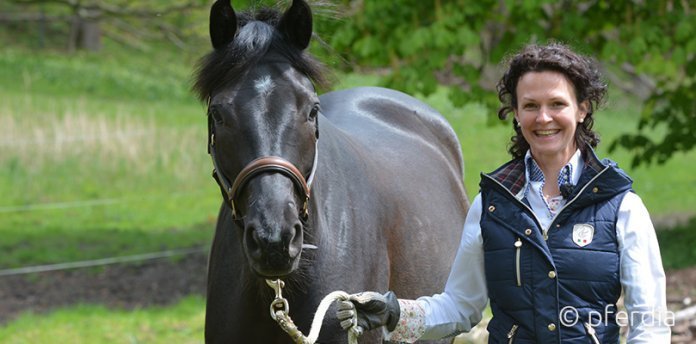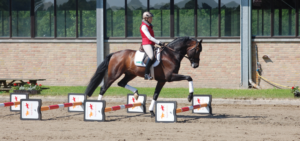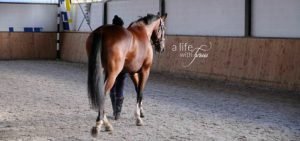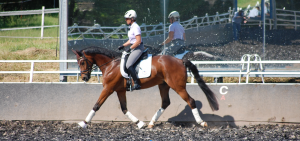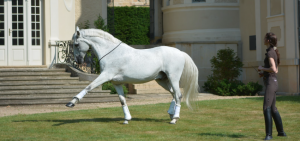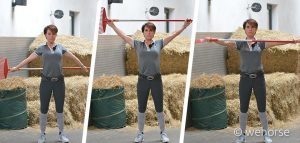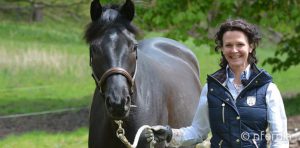Kathrin Roida demonstrates basic groundwork training and work in hand. As an introduction, here are three tips from Kathrin Roida on how you can exercise your horse, for both beginners and advanced riders.
Summary
3 Basic rules to get you started
It seems really simple, but let’s be honest: Does your horse stop immediately next to you at the slightest cue, and only start again when you tell him to? If he doesn’t, or only sometimes, then it’s time to put that back on the training plan.
1. How to stop your horse?
First, this is established on the second or third track with the crop held up as a barrier. Kathrin Roida’s works with an unschooled two-year-old. This two-year-old reacts so well that Roida soon only has to use a voice aid. If this first step is successful, the horse should stop when the trainer stops next to the horse at shoulder height. For this they go on the track, using the wall as a barrier. If the horse continues or starts forward again, Kathrin Roida takes the whip forward as an aid (when not used it should be held in the hand, pointing back and towards the ground). The horse should wait until the trainer gives a sign to move forward.
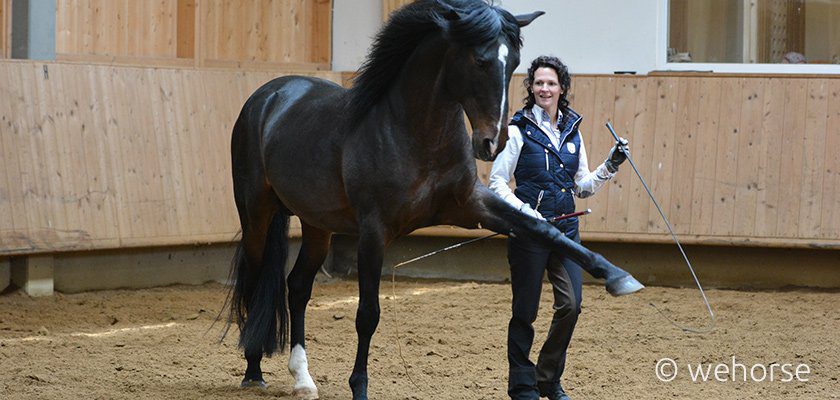
2. Using your body language for halting
Kathrin Roida leads her horses at shoulder height so that the horse can see her gestures. No pulling! When stopping, the trainer pulls her own shoulders back slightly and closes her legs with her feet together.
3. The driving aids
This includes your voice and the whip. Sometimes a voice aid will suffice – and then the whip should rest in the trainer’s hand, facing backwards. Very little is needed as aids. If your horse doesn’t react precisely at first, just keep going! Every beautiful picture is the result of work, continuity and consistency.
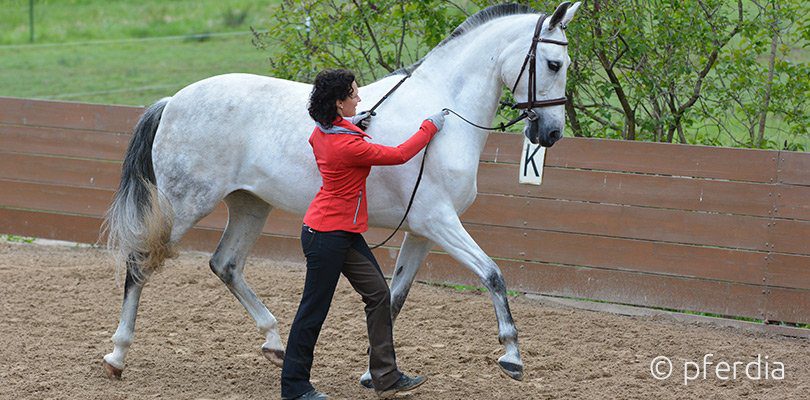
Groundwork training for advanced students: moving sideways
The leg yielding is a key lesson in ground work training for all those who want to practice lateral movements in hand later. That’s where it all starts, so it makes sense to focus on it from the start.
1. This is why you should practice leg-yielding:
It loosens, strengthens, familiarises your horse with the aids, gives you shoulder control, makes the haunches supple, makes mobile and stretches.
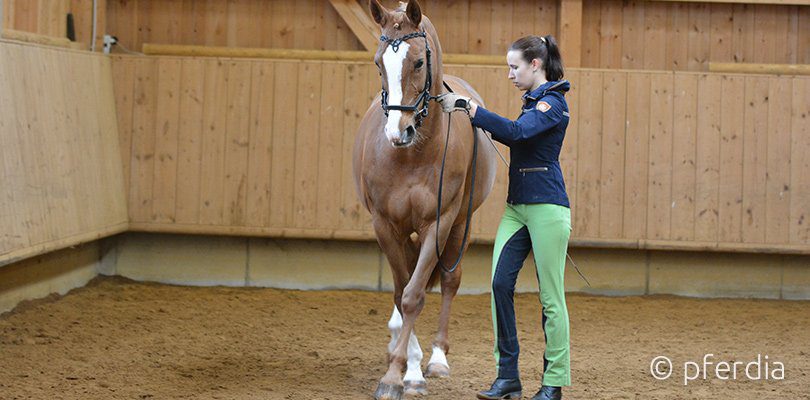
2. Equipment
You should adapt your groundwork training equipment to your horse’s temperament and stage of development. Kathrin Roida lets her horses do leg yielding on the cavesson before lunging training. It is also possible to practice this groundwork training on a snaffle bridle, with the trainer holding a whip in her hand as an aid. The advantage of the snaffle bridle in groundwork training is that the outer rein works well for controlling the shoulder.
3. Procedure
When practising the stepping over, the trainer stands in front of the horse. The horse moves sideways to step around her. Meanwhile she uses different head and neck positions and purposefully raises her head. This is how she explains it in her book: “The outer neck muscles, particularly the often-very-pronounced lower neck muscles are visibly elongated, and after training the neck appears longer and lovelier, although we have worked against the usual bridled posture. You can literally watch the horses gain in muscle and suppleness from this unspectacular work.” Only when shoulder control on the small circle is possible will Kathrin Roida use the exercise on larger lines.

